Dry-Aging Fish
A new technique for preserving your catch.
Last week, I ate a piece of bigeye tuna that had lurked in my refrigerator for 10 days. Normally, I get sketched out about eating even 5-day-old fish. This steak was different. It was my first attempt at dry-aging fish.
Most of us are familiar with dry-aged beef, a highly acclaimed process in the culinary world. When meat is properly aged, enzymes within it break down, making the final product more tender. Another benefit of dry aging is that it eliminates moisture, resulting in a more concentrated flavor.
The best steak I ever had was a 45-day dry-aged ribeye for which I paid a hefty price at a high-end steak house in Kansas City. It was fork-tender, and the flavor was far more robust than the standard-issue steaks at the supermarket. However, beef isn’t the only protein that can benefit from dry aging. As it turns out, dry-aging fish is also a thing.
My introduction to the process came not from a cookbook nor from a chef, but from the wide world of Instagram. I’m a sucker for following anyone who posts about fish butchery, and a few years ago, I stumbled across Liwei Liao, better known as “The Dry Aged Fish Guy.”
Originally from Taiwan, Liwei and his family immigrated to Queens, New York, when he was about five years old. Soon after, his father bought a small boat and they began fishing for scup, fluke, and bluefish.
“Being Asian, nothing went to waste,” says Liao. “We had to keep fish for as long as possible. Over the last 30 years, through that experience, I created my own method of how to maintain and condition fish from the moment it leaves the water.”
Even as a youngster, he recalls taking great pride in caring for his catch. He noticed that the fish toward the bottom of an ice-filled cooler became bruised after a couple of days, so he and his father began storing the cooler vertically, propped against a tree, with the fish buried head-first in the ice. This placed the weight of the ice on the fish’s head, alleviating the bruising. To this day, he still hangs fish from the tail when dry-aging, which he believes causes any excess blood and impurities to flow downward, exiting the prime fillets.
In 2000, Liao moved to Los Angeles to study engineering. After graduating, he dabbled in a few different careers. He designed and operated a food truck before taking a job as a manager for a global supply-chain firm. This provided the knowledge he now uses to import fish from just about every corner of the globe.
A lifelong, avid angler, in 2018 he decided that if he couldn’t fish for a living, selling fish would be the next best thing. After visiting a local supermarket and being thoroughly appalled by the manner in which they handled fish, he and his brother, David, opened up The Joint.
Initially, their fish market had a traditional setup where the fish were laid on beds of shaved ice in a display case. Liao began carrying a long list of exotic specimens, but soon had a revelation. The ice was the enemy. It cooled only one side of the fish, leaving the other side to quickly deteriorate. And, since the ice was made from chlorinated water, it had a negative impact on seafood, and, once melted, it accelerated spoilage. Food-loss expenses were piling up, so with a background in engineering, he began looking for other ways to preserve his wares.
Liao invested in a high-end dry-aging refrigerator intended for curing beef, which he kept hidden in the back of the shop. However, he quickly realized the benefits it provided and began pitching the concept to adventurous customers. Word got out that he was selling some of the highest-quality fish in the city, and the business began booming. He decided to place the refrigerator at the front of the market, which prompted conversations as he enlightened his clientele about the benefits of keeping fresh fish dry.
By the time the pandemic hit, The Joint had seven specialized refrigerators, most of which were now proudly displayed in the front window, where passersby stopped to check out the impressive lineup of unusual whole fish looking back at them. Meanwhile, Liao was experimenting with aging the fish longer and longer. More often than not, he found that aging it resulted in a superior final product.
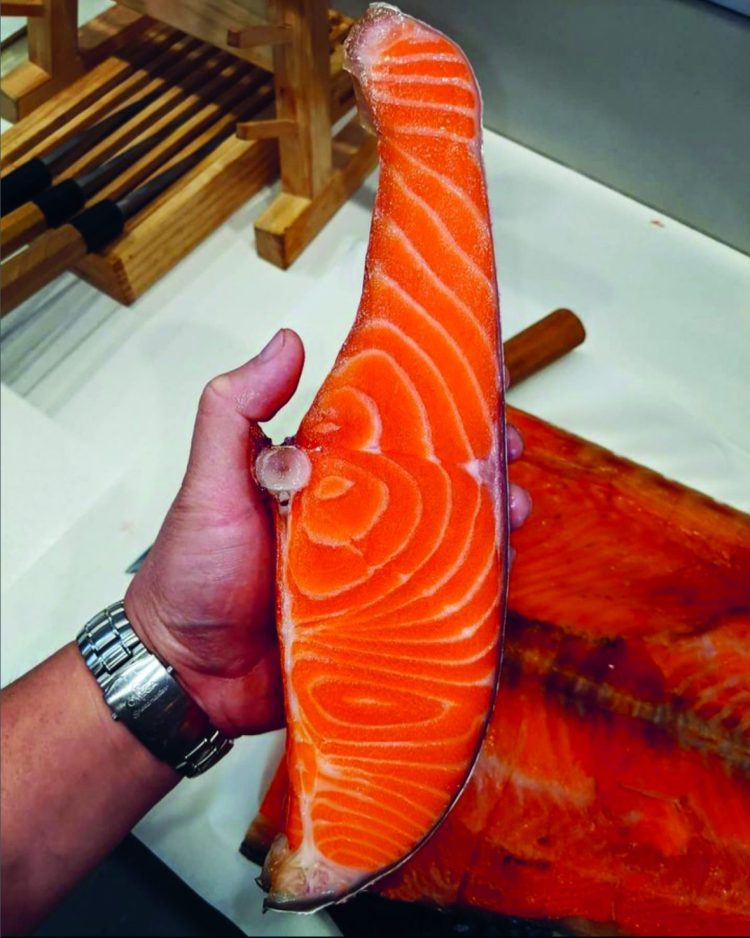
“Fresh is boring.” Says Liao. “Most people that eat my fish say, ‘Oh, wow, that tastes fresh, because in their mind it still represents what fresh should be. It’s very crisp, it’s very clean, it has a lot of clarity, it has a lot of texture.”
When aging fish, Liao prefers to keep it as whole as possible. The eyes, scales, and fins all provide him with insight on any adjustments that might be needed, and air flow, humidity, and temperature are adjusted accordingly. Each fish is tagged and he uses a logbook to record every adjustment, start to finish, for every fish in the shop. Aging $3,000 worth of Pacific salmon for several weeks is a nerve-wracking endeavor. If something happens to go wrong, he wants to understand exactly what caused it.
When a shipment comes in, the fish are quickly rinsed with cold water, then meticulously dried with towels. He then uses a specialized sukibiki knife, which is tapered on one side and can only cut right to left, to delicately slice off the top layer of skin and remove the scales. This enhances evaporation: some of the fish lose up to 25 percent of their weight when aged for an extended period of time. No salt or other ingredients are included in the process.
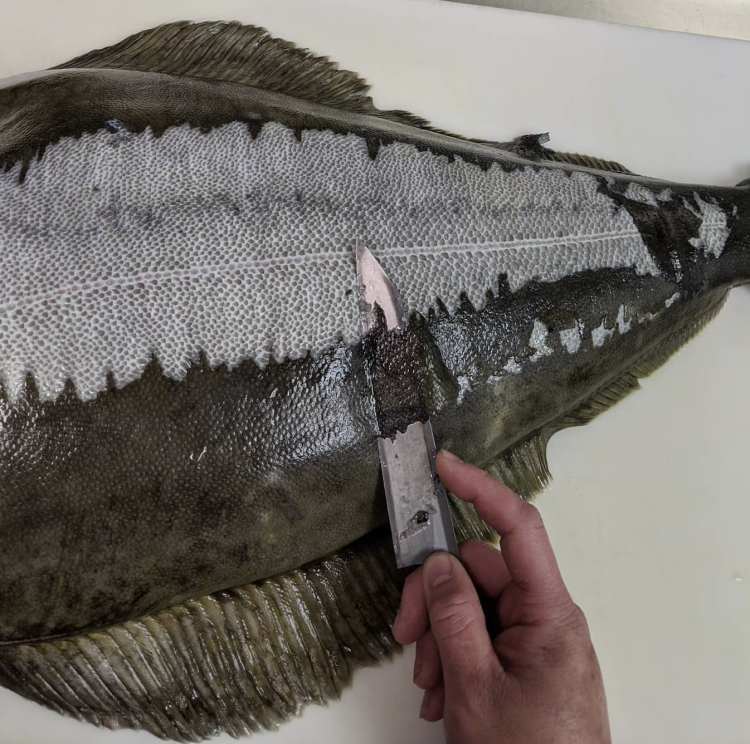
The length of time a fish is aged depends on its size and fat content. Oily fish like salmon and tuna are often aged for longer periods of time than lean fish.
“Comparing branzino to tuna,” says Liao, “is like comparing quail to beef. A 600-pound tuna could age for 18 to 21 days, whereas a 1-pound branzino needs only three or four.”
The resounding success of Liao’s dry-aged fish in Los Angeles has proven that his technique is more than just a trend. He now sells his product to some of the most prestigious restaurants in the country and is currently building a new commercial facility that will allow him to cure 25,000 pounds of fish per week, which he hopes will provide him more time to go fishing.
So, how was that 10-day-old piece of bigeye tuna I recently cooked up? Honestly, I was a little scared to eat it at first. Before cooking it, I took a big whiff. I was expecting there to be at least a hint of funk, but there was absolutely nothing. It was completely odorless. Not wanting to come down with botulism or one of those other scary ailments we are constantly warned about, I opted to grill it to kill any bacteria that might have grown on the outer layer. (Did you know there are only 110 cases of botulism, on average, reported annually in the U.S. Only about 25% are caused by food, and most of those cases came from eating squirrel.
I marinated it for about 10 minutes using my favorite butter/herb recipe, and seared it for about two minutes per side, pulling it when it hit 65 degrees in the thickest part. I sliced it across the grain and drizzled on a bit of lemon juice and olive oil. I quietly chewed it, rolling my eyes like a judge eating something weird on Iron Chef.
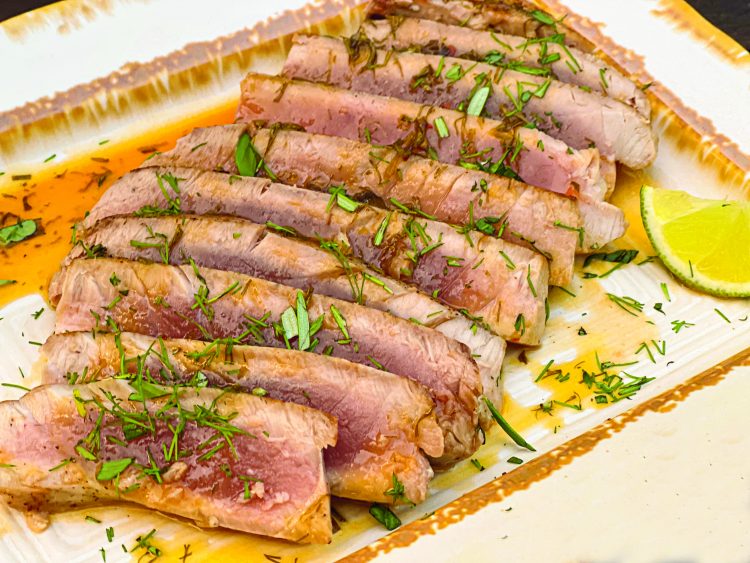
The color was noticeably lighter—not bright red like the pieces I had eaten fresh. It looked more like albacore tuna than bigeye. There was no fishiness, but the flavor was slightly more concentrated, it was more robust, but not in a bad way at all. The texture was the most noticeable characteristic. It was much more tender.
Was it actually better than the piece I ate the night after the fish’s capture? I don’t know, but it definitely wasn’t worse. It was different, not in a good way, but not in a bad way either.
The biggest win for me was realizing I now have the ability to extend the shelf life of the fresh fish I catch. I’m not a big fan of freezing fish because it is comprised of about 60% water. When frozen, all that water expands, which breaks the cell walls and makes the meat mushy. This new method will certainly come in handy the next time I come home with a big haul of fillets. The next time I try aging tuna, I am going for two weeks. Wish me luck…
How To Dry Age
Since starting work on this article, I’ve done a lot of research on dry-aged fish. There is a ton of info out there about eating it, but not much has been written on how to actually do it yourself at home. If you want to go all out and become the next Liwei Liao, you can purchase a specialized refrigerator unit designed to dry-age beef. The cheapest one I could find online costs $550, and most of the others I found were in the thousands.
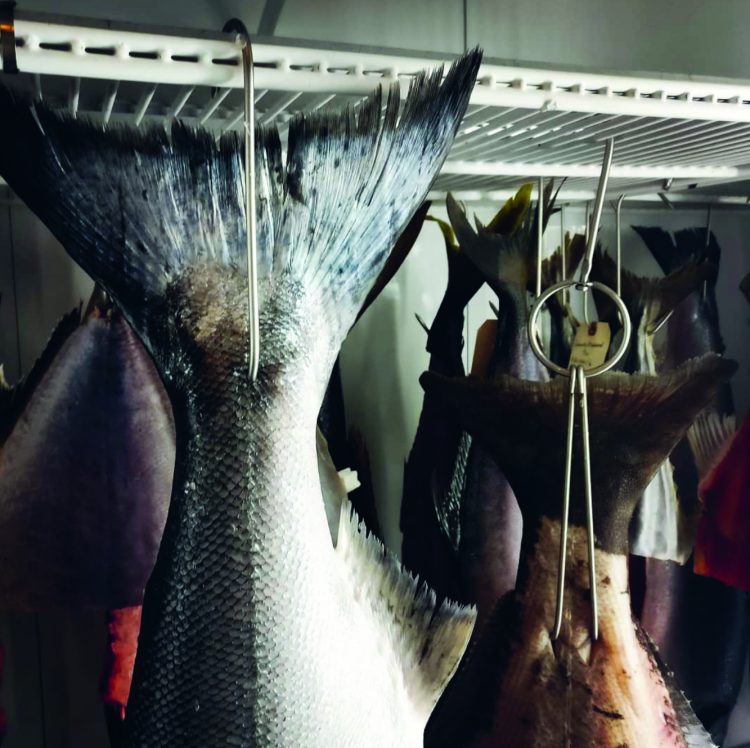
I also investigated how to dry-age beef at home and there is plenty of info out there on that. The most affordable method involves using a small “dorm” refrigerator and adding a product like DampRid, which removes excess moisture from the air. I suspect that this, combined with a copious amount of paper towels, would do the trick; unfortunately, I could find info on anyone actually trying this method with fish. However, I am considering trying it the next time I get a whole fish like a fluke.
The method I used comes from a New Zealand fishing website, where the author claims it keeps fish for up to 10 days (which I can attest to).
This method is about as low-tech as it gets. Start by rinsing your fish under cold water to remove any scales, blood, or fish slime. Thoroughly dry it with paper towels. Next, wrap the fish with at least two layers of paper towels. Place it in a zip-close bag, squeeze out as much air as possible, seal it, and pop it in the fridge for one day. On day two, replace the paper towels, which will have extracted quite a bit of moisture. On day three, replace the paper towels again, but this time, tightly wrap the fish in plastic wrap, and once again store refrigerated inside a zip-close bag. The fish should stay fresh for up to another week.
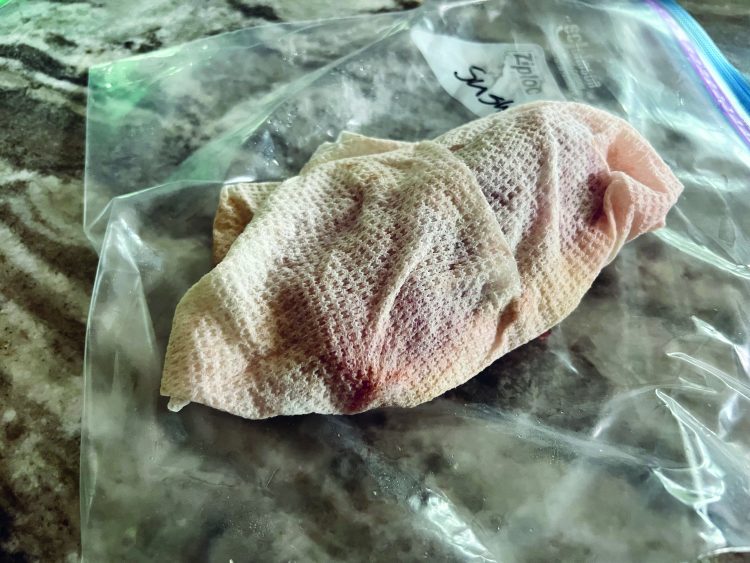
When it comes time to eat it, make sure you take a big sniff. Trust your nose. If it’s funky, order a pizza. Liwei Liao has served raw fish that he dry-aged for up to 70 days. As a disclaimer, I’m not sure I can recommend this when aging fish at home. I suggest cooking it to be on the safe side.
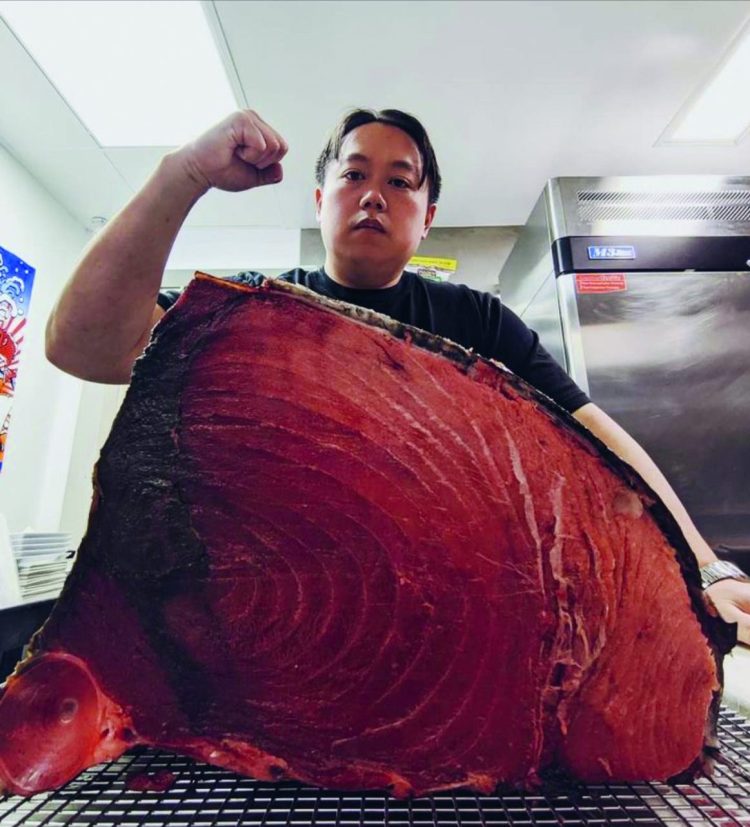
Seared Tuna With Citrus/Butter/Herb sauce
- 2 thick-cut tuna steaks
- Juice and zest from 1 orange
- Juice and zest from 1 lime
- 1 tablespoon fresh herbs (thyme, basil, oregano, etc.)
- 2 teaspoons honey
- 1 1/2 tablespoons butter
- Salt & black pepper
- 1 tablespoon peanut oil
Pop a ceramic plate in your freezer (this is important). Liberally salt and pepper the tuna steaks and refrigerate for a half hour. Add the orange and lemon juice to a saucepan, bring to a simmer, and reduce by about one half. Add the zest, honey, half the herbs, and simmer for one minute. Add the butter. Once it is melted, remove from heat and whisk.
Preheat a skillet, add the peanut oil, and wait one minute. Sear the tuna steaks for about two minutes. Flip and cook until they hit 65 degrees in the thickest part. (You can also grill them, if desired.) Remove and place on that plate you popped into the freezer, which will stop the cooking process.
Slice the tuna across the grain and artistically arrange it on your finest serving platter. Drizzle the citrus/butter concoction over the top, and garnish with a touch of the remaining herbs.
The following recipe was sent to me by On The Water reader Joanne Cameron. I’ve been friends with Joanne for many years on Facebook, where I enjoy her “photo of the day” posts. Back in May, I finally met her in person while squid fishing in Nantucket Sound. We got to talking about fish cookery, and I asked her for her favorite fluke recipe. I was slightly surprised when she described the following concoction, which includes two unique ingredients I have never used with fish: champagne and grapes.
I finally got around to trying it last week with some black sea bass fillets. This is an amazing recipe, so give it a try.
Fillet of Sole Veronique Sauteed with Grapes, Champagne, and Cream
(Recipe courtesy of Greg Morton, Chef/Owner of Bridge Street Cafe in S. Dartmouth, MA)
- Clarified butter
- two 6-ounce flounder fillets
- Flour for dredging, seasoned with salt and pepper
- 20 white grapes, sliced
- 1 bottle of good champagne
- 1/2 pint heavy cream
Preheat a nonstick skillet to medium-high heat and coat bottom with clarified butter. Lightly dredge fish fillets in seasoned flour and place in pan. Sauté quickly, 2 to 3 minutes, on each side and transfer to a warm dinner plate. Add grapes and deglaze pan with champagne, cook for 2 minutes and drizzle in cream to desired consistency, then pour over fish. Serve with steamed red potatoes with chives and a fresh-steamed green vegetable. Serve the balance of champagne with dinner.
Masters Of Fish Butchery on Instagram
If you want to learn more about interesting fish-cookery techniques while wasting time on social media, follow these three influencers.
View this post on Instagram
Liwei Liao, owner of The Joint in Los Angelos, was my inspiration for this article. Not only is he the master of dry-aging fish, but he also creates stunning culinary masterpieces.
View this post on Instagram
A master fish cutter at Captain Clay and Sons Seafood in Delray Beach, Florida, Reed Brand’s knife skills are second to none.
View this post on Instagram
Chef and owner of Saint Peter Paddo in Australia, Joshua Niland is constantly creating jaw-dropping presentations using a vast variety of fish.
Leave a Reply